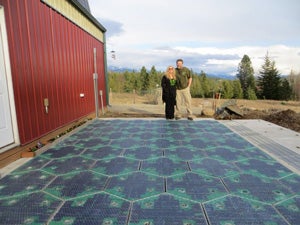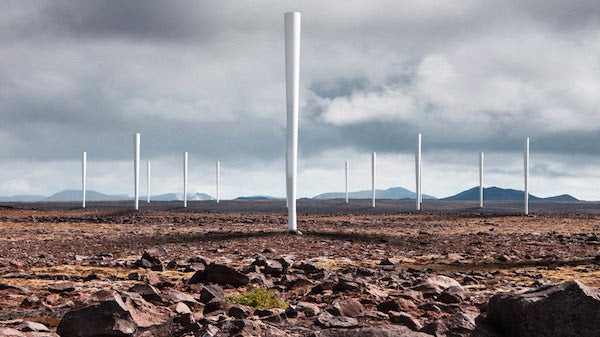This article was published in Scientific American’s former blog network and reflects the views of the author, not necessarily those of Scientific American
One distinction between renewable energy technologies and their nonrenewable counterparts is their popular appeal. Surveys have found a majority of Democrats and Republicans support increasing government funding for renewable energy research and tax rebates for people who purchase solar panels or energy efficient vehicles. Public support for fossil fuels is decidedly lower, with 70 percent of Americans saying all subsidies for fossil fuels should be discontinued, including a majority of Democrats, Republicans, and Independents.
The popular advantage that renewable energy technologies have over conventional energy technologies isn’t just a marketing perk, but also a potentially decisive advantage in an emerging fundraising trend for startup companies: Internet-based crowdfunding through a service like Indiegogo, which allows startup companies to solicit small donations from ordinary Internet users. Since the 2012 Jumpstart Our Business Startups (JOBS) Act loosened restrictions on crowdfunding, the unique financing tool has become an increasingly appealing option for cleantech startups hoping to make their idea a reality.

Solar Roadways co-inventors stand near a prototype solar parking lot outside their backyard lab. (Source: Solar Roadways)
On supporting science journalism
If you're enjoying this article, consider supporting our award-winning journalism by subscribing. By purchasing a subscription you are helping to ensure the future of impactful stories about the discoveries and ideas shaping our world today.
The most notable example of late is the Solar Roadways Inidiegogo campaign, which raised over $2.25 million to develop solar panels that double as a drivable road surface. Solar Roadways created a tidal wave of excitement around their technology using unconventional marketing tools like a YouTube video titled “Solar FREAKIN’ Roadways!” that went viral shortly after it debuted. After achieving Internet fame, the campaign went on to more than double its $1 million fundraising goal, setting an all-time record for the Indiegogo site.
Considering the unbridled success achieved by the Solar Roadways campaign, it’s easy to think crowdfunding could be a game changer for clean energy innovation. When conventional forms of capital were unavailable, Solar Roadways found funding through the people of Internet in a uniquely democratic way. That’s a win for renewable energy and the environment, right?
Despite the flurry of popular excitement that emerged around the Solar Roadways campaign, there are still legitimate questions remaining about whether the technology is actually deserving of all the funding it attracted. A number of experts have pointed out underlying issues with the concept of embedding solar panels in roadways, including Scientific American’s own David Biello. For one, putting solar panels in the roadway puts them underneath cars, mud, dust, and other forms of shading that can dramatically reduce the solar panels' electrical output, and thereby decrease their value. On top of that, it's already difficult to afford building and maintaining ordinary asphalt roads and highways in today’s era of cash-strapped governments, so it's hard to see how we could possibly afford roads made out of tempered glass, solar panels, and complex electronics.
So how did Solar Roadways manage to raise over $2 million? It's easy for the bandwagon nature of the Internet to quickly draw viral attention toward an idea or meme—especially one as catchy as "Solar FREAKIN' Roadways." Combine viral popularity with a crowdfunding platform like Indiegogo and you get millions of crowd-sourced dollars flowing toward the startup behind the idea.
But if achieving Internet fame is the litmus test for which startups receive the most funding, is there a risk that crowdfunding for clean energy will be drawn to those startups more focused on marketing than the actual market viability of their product?
Let’s look at another recent example. An Indiegogo campaign currently in progress for a bladeless wind generator developed by the company Vortex Bladeless has already raised over $62,000, or 125 percent of its goal. Vortex claims their unique wind generator, which produces energy from vibrations induced by wind vortices that form behind its upright shaft, can achieve an all-in or levelized cost for energy that is 40 percent less than that of conventional wind turbines. The promise of improving the economics for wind energy has helped rally interest in Vortex’s technology, including attention from the likes of Wired and The Guardian.

Vortex Bladeless has proposed a new wind energy technology that captures energy from vortices that form behind upright shafts and cause them to vibrate. The company claims their system will produce energy that costs 40 percent less than conventional wind energy. (Source: Vortex Bladeless)
But like the Solar Roadways campaign, there are still a number of lingering questions about the merits of Vortex’s bladeless technology. Because their generator consists of a single upright shaft, it sweeps far less area than a conventional wind turbine, so it captures much less wind energy overall. To achieve a bladeless generator with similar power output to today's wind turbines, a very tall upright shaft would be required, increasing the costs associated with materials, construction, and transportation. Considering these limitations and the enormous amount of operational experience that conventional wind turbines already have, it’s hard to see how an early-stage technology like Vortex’s bladeless wind generator could promise a 40 percent reduction in cost.
The fact that a proposed clean energy technology has its limitations doesn't mean you shouldn't fund it. After all, a major purpose of startup funds is technology development. But that doesn't mean you shouldn't be skeptical of the claims made by a startup company asking for your dollars—especially in this era of clickbait headlines and viral marketing. If the goal is to promote the dissemination of technologies that will promote a sustainable energy system, then it would be best to direct funding toward startups with the greatest potential to displace conventional technologies in a meaningful way, and not just the viral energy sensation of the week.